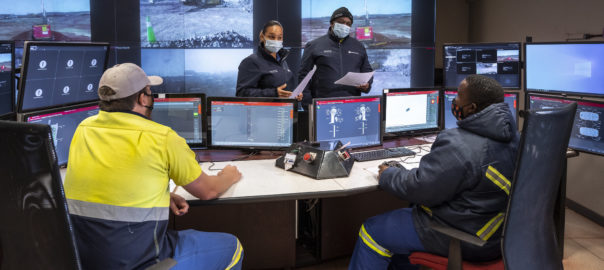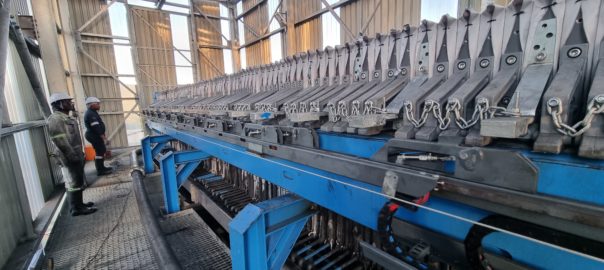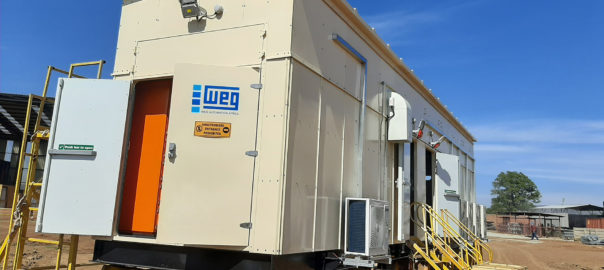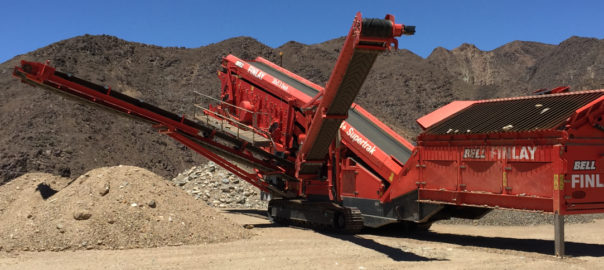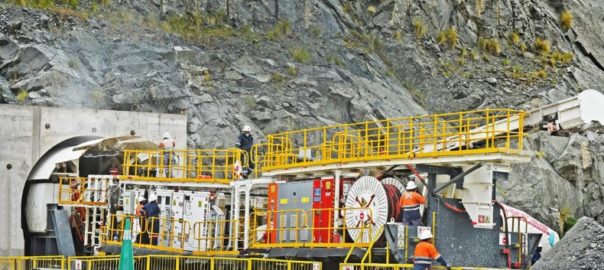The performance of Multotec’s pulping chutes at Ekapa’s diamond treatment operation in Kimberley, South Africa, over the past couple of years has, the company says, opened the door to quicker and more cost effective fines scrubbing.
According to John Britton, Technical Consultant at Multotec, the two pulping chutes have achieved outstanding results, helping the customer’s facility to cost effectively increase the throughput of its Combined Treatment Plant (CTP).
“At our recent two-year inspection of the plant, we found that the wear rate on the ceramic lining of the wave generator was only 20 mm over that 24-month period,” Britton says. “Each chute was processing 380 t/h of recrushed kimberlite product with 380 cu.m of water, rushing down a 28° incline.”
Multotec’s patented wave generators use gravity to create a constant turbulent mixing action in the slurry flow that releases the mud, clay and slime sticking to the kimberlite particles. The chutes are positioned to receive material from the high pressure grinding rolls’ interparticle tertiary crushing circuit. Multotec’s engineered alumina ceramic tiles give the chutes and wave generators high wear resistance, it says.
“The chutes exceeded our expectations in how well they separated the clay from the kimberlite ore and broke up clay balls in the material stream,” Britton says. “This has really demonstrated the long-term capacity of our design to deliver results with hardly any maintenance or operator intervention.”
He highlights that the chutes are stationery structures that rely on the kinetic energy being created by the in-rush of slurry flow over the wave generators. This makes the solution much simpler and less energy-intensive than traditional rotary scrubbers with motors, drives and gearboxes. The chute can also achieve its results much quicker, as the material flow passes through in just three to four seconds.
Ekapa CEO, Jahn Hohne, says he has been impressed by how well the chutes have performed as an alternative to a considerably more costly scrubber circuit, and having delivered a 20% increase in throughput through the plant and making a positive economic contribution to overall efficiency. Hohne says he admired Multotec’s innovation capability and looked forward to even further improvements in the design.
Britton notes that, after conducting the wear inspection of the chutes, there were modifications Multotec was planning. One of these related to the retarder bars, which slow down and divert the slurry flow.
“We believe we can achieve even better results if we remove some of the retarder bars and install another set of wave generators,” he says. “Our results suggest that this will get the ore material even cleaner, before it reports to the screen, the conveyor belt and finally the dense medium circuit.”
The success of the pulping chutes at Ekapa has led to considerable interest from other diamond producers in southern Africa, he added.








